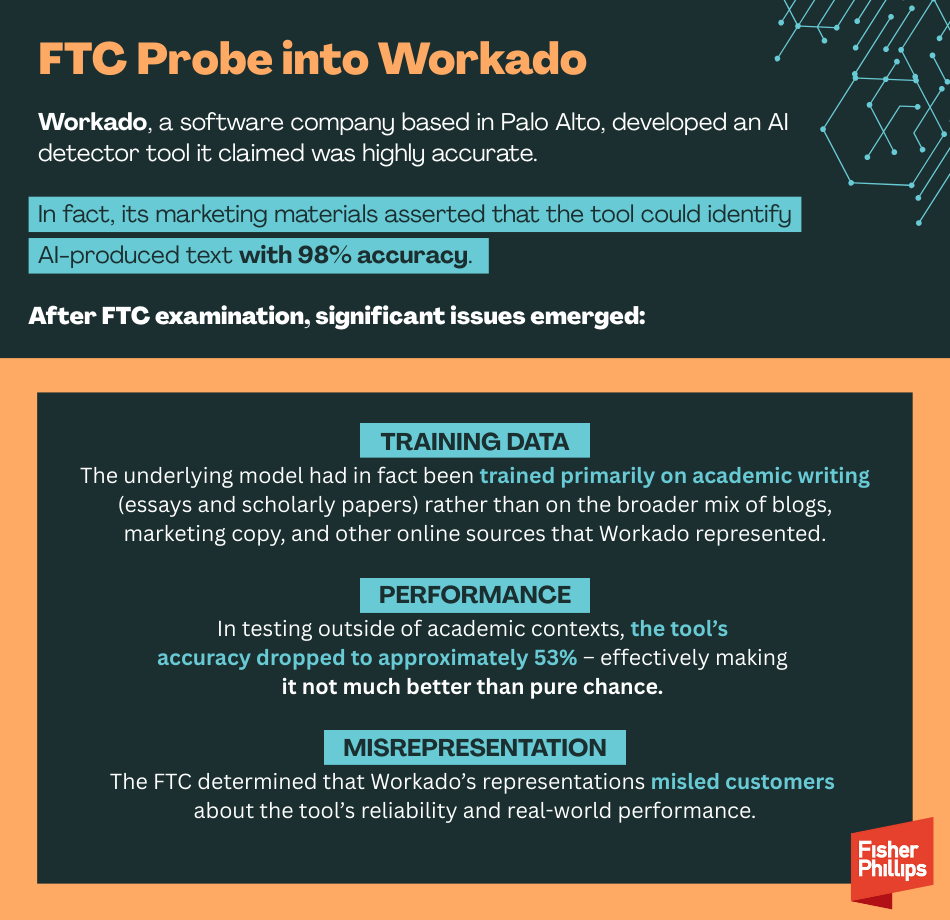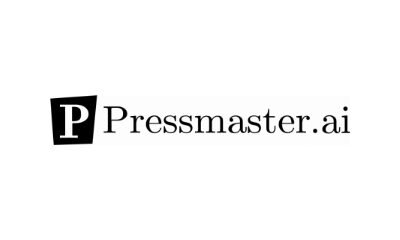Tools & Platforms
AI shakes up the call center industry, but some tasks are still better left to the humans

NEW YORK (AP) — Armen Kirakosian remembers the frustrations of his first job as a call center agent nearly 10 years ago: the aggravated customers, the constant searching through menus for information and the notes he had to physically write for each call he handled.
Thanks to artificial intelligence, the 29-year-old from Athens, Greece, is no longer writing notes or clicking on countless menus. He often has full customer profiles in front of him when a person calls in and may already know what problem the customer has before even saying “hello.” He can spend more time actually serving the customer.
“A.I. has taken (the) robot out of us,” Kirakosian said.
Roughly 3 million Americans work in call center jobs, and millions more work in call centers around the world, answering billions of inquiries a year about everything from broken iPhones to orders for shoes. Kirakosian works for TTEC, a company that provides third party customer service lines in 22 countries to companies in industries such as autos and banking that need extra capacity or have outsourced their call center operations.
Answering these calls can be thankless work. Roughly half of all customer service agents leave the job after a year, according to McKinsey, with stress and monotonous work being among the reasons employees quit.
Much of what these agents deal with is referred to in the industry as “break/fix,” which means something is broken — or wrong or confusing — and the customer expects the person on the phone to fix the problem. Now, it’s a question of who will be tasked with the fix: a human, a computer, or a human augmented by a computer.
Already, AI agents have taken over more routine call center tasks. Some jobs have been lost and there have been dire forecasts about the future job market for these individuals, ranging from modest single-percentage point losses, to as many as half of all call center jobs going away in the next decade. The drop likely won’t match the more dire predictions, however, because it’s become evident that the industry will still need humans, perhaps with even higher levels of learning and training, as some customer service issues become increasingly harder to solve.
Some finance companies have already experimented with going all in on AI for their customer service issues only to run into AI’s limitations. Klarna, the Swedish buy now, pay later company, replaced its 700-person customer service department with chatbots and AI in 2023. The results were mixed. While the company did save money, overall customer satisfaction rates dropped as well. Earlier this year, Klarna hired a handful of customer service employees back to the firm, acknowledging there were certain issues that AI couldn’t handle as well as a real person, like identity theft.
Tools & Platforms
AI Horizons summit: Pa. must invest in energy production, embrace AI

This week’s second annual AI Horizons summit brought together academics, politicians, and leaders from storied Pittsburgh institutions and upstart startups.
“We have to combine the forces and the resources of our old and new leaders in energy industry and AI to all row in the same direction,” said Joanna Doven, executive director of AI Strike Team, which hosted the gathering. “Now is the time to radically merge.”
The two-day event unfolded at Bakery Square, the anchor for a stretch of Penn Avenue that is home to more than a dozen technology and AI companies including Google and the Pittsburgh-based Duolingo. Developers and AI enthusiasts have termed the mile-long corridor “AI Avenue.”
It was the second AI-related summit held in Pittsburgh in as many months; U.S. Sen. Dave McCormick’s inaugural Pennsylvania Energy and Innovation Summit debuted at Carnegie Mellon University in July with high-profile guests including President Donald Trump. That event touted roughly $90 billion worth of energy- and AI-related investment in the state (though a sizable chunk of that spending was already in place).
This week’s AI Horizons summit seemingly sought to forge more immediate connections between the companies, venture capitalists, and researchers in attendance, albeit at a smaller scale. On Thursday, BNY and CMU jointly announced the financial services company will invest $10 million in an AI lab at the university over the next five years.
The investment aims to “make sure that we are going to be at the very forefront of the research of how AI can apply to our firm and our industry,” said BNY CEO Robin Vince.
“Artificial Intelligence has emerged as one of the single most important intellectual developments of our time, and it is rapidly expanding into every sector of our economy,” CMU president Farnam Jahanian said in a statement. “Carnegie Mellon University is thrilled to collaborate with BNY — a global financial services powerhouse — to responsibly develop and scale emerging AI technologies and democratize their impact for the benefit of industry and society at large.”
And speakers said western Pennsylvania is well positioned to facilitate the AI boom, thanks to the expertise and skilled labor force being created by local universities including CMU and the University of Pittsburgh. The region’s industrial history and proximity to open land and natural resources needed for massive AI data centers could also help.
“Power and the ability to consume it is going to be one of the biggest challenges we face” when expanding the use of AI, said Toby Rice, president and CEO of EQT Corporation, the largest natural gas producer in the U.S.
Data centers have, as one speaker put it, an “insatiable appetite for energy,” and need vast amounts of power both to run the computers and to keep them cool.
A recent analysis from the federal Energy Information Administration predicts electricity used for commercial computing will increase faster than any other use in buildings over the next 25 years, sparking fears that the added stress on the power grid could spike rates for everyday Pennsylvanians.
“The only way to keep those prices down,” said Republican state Sen. Devlin Robinson, “is to open up the gas fields, make sure that the nuclear power plants are online, make sure that we’re cultivating the renewable energy so that we have a full grid that is able to sustain all of the energy needs of the Commonwealth and especially the region where these data centers are gonna go up.”
Democratic state Senate leader Jay Costa too encouraged an “all-of-the-above approach” to energy generation, but cautioned that “ the costs cannot be solely borne by the ratepayers.
“We have to have some balance and some guardrails in place” to protect consumers, he said.
But the focus on natural gas at the summit drew criticism from local environmental groups who decried the absence of robust discussion about renewable energy like solar and wind.
The Clean Air Council’s Larisa Mednis said reliance on fossil fuels contributes to worsening climate change.
“If this technology and AI is a sign of progress or a sign of innovation, why are we relying on antiquated forms of energy use … that we know are not serving people and are not going to help sustain the planet?” Mednis asked.
Critics say investments in gas-powered data centers rarely generate long-term economic or job growth.
“Data centers are very automated, highly capital-intensive projects that can soak up billion-dollar investments like a sponge and leave next to nothing for surrounding communities,” said Joanne Kilgour, executive director of the Appalachian think tank Ohio River Valley Institute.
The environmental costs of AI drew little discussion at the summit.
Many of the conversations mirrored those that took place at the July event. Indeed, the two events shared a number of speakers, including Sen. McCormick and Pennsylvania Governor Josh Shapiro, and similar talking points.
Shapiro once again touted the state as a leader in the “AI revolution,” likening it to previous technological upheavals like the agricultural and industrial revolutions.
“ We were the epicenter of growth and development and revolution because of the coal under our ground, because of the steel that we’ve made here, because of the ingenuity of our farmers,” he said. “This is the next chapter in our innovative growth as a commonwealth, which is gonna fuel growth in this country, fuel growth around the globe. And it happens because of AI.”
During a panel discussion with BNY CEO Vince and Westinghouse interim CEO Dan Sumner moderated by CMU president Jahanian, Shapiro said his administration will expand a generative AI pilot program for state employees launched in 2024.
“ I view AI not as a job replacer, but a job enhancer,” he said. “ We can streamline our processes and make things work more effectively.”
“ We can do big things with these tools, and we are showing how to deploy them in a responsible way,” he added.
Still, leaders in government and business need to take bigger swings to get ahead in the AI arms race, said U.S. Senator Dave McCormick. Pennsylvania isn’t just competing with neighboring states to attract data centers and AI companies, he said, but also with countries that are AI powerhouses in their own right, like China.
“We’re not gonna win with incrementalism,” he said. “This has to be disruptive. We’re gonna get disrupted one way or the other. The question is whether we’re gonna be the disruptor or the disruptee.”
AI is already changing the ways people do business, McCormick added, and the amount of money being poured into the industry far exceeds that which was spent on past innovations.
“This is not something that we’re gonna be able to slow down. It is something we can guide,” McCormick said.
He urged officials in both parties to accelerate AI and energy production, and establish Pennsylvania as a leader in the industries.
“ I think we have a good hand to play, but we don’t have a royal flush,” he said. “So we gotta … make the effort to improve the things that are lacking.”
Tools & Platforms
AI Strategy & Integration | Forvis Mazars

Unlock your full potential with AI.
For today’s C-suite, it’s not about if you should use Artificial Intelligence, but how fast you can put it to work. Whether you’re tightening up forecasts, boosting patient care, staying ahead of compliance, or wowing customers, AI is the power tool in your digital toolbox. Here’s how to implement it responsibly, securely, and at scale.
Empowering organizations to turn AI into impact.
Organizations aim to strategically leverage AI to increase efficiency, enhance processes, and empower their workforce. With AI becoming a top priority, it’s imperative to identify practical and valuable ways to embed AI that aligns people, processes, technology, and data, all while advancing your business objectives. The ultimate challenge lies in where to begin.
As AI becomes more prevalent, businesses need to clearly define their business goals and vision for the future, so a tailored AI strategy can be customized to your operational needs. Seeking clarity, data governance, and leadership buy-in is critical in the beginning stages of your AI strategy. With a well-defined strategy comes an in-depth approach, including readiness assessments, implementation, and evaluation to position your organization for long-term success.
AI Transformation Journey
Tools & Platforms
Government Puts AI Companies on Notice About Boastful Advertising: 5 Practical Lessons for the Tech Sector | Fisher Phillips

In a wakeup call to tech companies that develop artificial intelligence products, the Federal Trade Commission (FTC) recently cracked down on a large AI software company that couldn’t back up its AI-related claims with actual evidence of success. The August 28 final order is a good reminder that long-standing advertising principles apply equally to both traditional businesses and those marketing AI products and services. What happened in this case and what are five practical lessons tech companies can take from the government action?
Software Company Makes Bold Claims About AI Products – and Government Took Notice
Workado, a software company based in Palo Alto, developed an AI detector tool it claimed was highly accurate. In fact, its marketing materials asserted that the tool could identify AI-produced text with 98% accuracy. This claim is particularly striking given that educators, publishers, and businesses are actively seeking reliable methods to distinguish human-authored content from text created by generative AI.
When the FTC examined Workado’s claims more closely, however, significant issues emerged:
- Training Data: Although Workado advertised its tool as capable of analyzing a wide range of content, the underlying model had in fact been trained primarily on academic writing, such as essays and scholarly papers, rather than on the broader mix of blogs, marketing copy, and other online sources that the company represented.
- Performance: In testing outside of academic contexts, the tool’s accuracy dropped to approximately 53% – effectively making it not much better than pure chance. The FTC called it “no better than a coin toss.”
- Misrepresentation: The FTC determined that Workado’s marketing materially overstated the product’s capabilities, and that these representations misled customers about the tool’s reliability and real-world performance.
FTC Comes Down Hard on Tech Company
As a result, the FTC approved a final consent order on August 28 that requires Workado to:
- Stop making unsupported accuracy claims. Workado must stop making any representations about the effectiveness or “accuracy” of its AI Content Dectector unless those claims are not misleading and are supported by “competent and reliable evidence” at the time in which the statements are made.
- Retain test data and evidence. The company must maintain documentation of how it establishes its performance claims, including testing data and analysis when related to the product’s efficacy.
- Notify customers. The company must send out an FTC-drafted notice explaining the issue to users including informing them about the consent order and settlement, ensuring transparency regarding the tool’s corrected representation.
- Report to the FTC. Workado must provide annual compliance reports to the government for four years.
5 Practical Lessons for AI Companies
Given this FTC order, here are some practical takeaways that can guide your approach to marketing your AI products:
1. Test broadly, not narrowly.
If your product will be used across different domains, your testing should reflect that. A model trained on academic writing may look great on essays, but if customers are using it on social media content or business reports, the results can collapse. Don’t assume “works here” equals “works everywhere.”
2. Don’t let your marketing team run ahead of your data science team.
Ambitious claims often come from the desire to stand out in a crowded market. But marketing language needs to stay tethered to hard evidence. A practical step: set up a cross-functional review where technical staff vet marketing copy for accuracy before it goes public.
3. Build an “evidence file.”
Every performance claim should have a paper trail: training sets, validation results, methodologies, error rates, and limitations. If challenged by customers, competitors, or regulators, you’ll want that file at your fingertips as your insurance policy.
4. Acknowledge limitations openly.
Some founders fear that careful wording in describing AI products will dull the “wow factor.” Paradoxically, however, admitting where your tool struggles can increase credibility. Customers appreciate candor. A statement like “Our model performs best on structured text such as contracts and policies, but may be less accurate on informal writing” is better than vague promises of universal accuracy.
5. Build compliance into your culture.
You don’t need an in-house regulatory team to start. Small practices go a long way: routine internal audits, clear versioning of claims, and setting a rule that no metric goes into public materials without validation.
-

 Business2 weeks ago
Business2 weeks agoThe Guardian view on Trump and the Fed: independence is no substitute for accountability | Editorial
-
Tools & Platforms1 month ago
Building Trust in Military AI Starts with Opening the Black Box – War on the Rocks
-

 Ethics & Policy2 months ago
Ethics & Policy2 months agoSDAIA Supports Saudi Arabia’s Leadership in Shaping Global AI Ethics, Policy, and Research – وكالة الأنباء السعودية
-

 Events & Conferences4 months ago
Events & Conferences4 months agoJourney to 1000 models: Scaling Instagram’s recommendation system
-

 Jobs & Careers2 months ago
Jobs & Careers2 months agoMumbai-based Perplexity Alternative Has 60k+ Users Without Funding
-

 Podcasts & Talks2 months ago
Podcasts & Talks2 months agoHappy 4th of July! 🎆 Made with Veo 3 in Gemini
-

 Education2 months ago
Education2 months agoVEX Robotics launches AI-powered classroom robotics system
-

 Education2 months ago
Education2 months agoMacron says UK and France have duty to tackle illegal migration ‘with humanity, solidarity and firmness’ – UK politics live | Politics
-

 Funding & Business2 months ago
Funding & Business2 months agoKayak and Expedia race to build AI travel agents that turn social posts into itineraries
-

 Podcasts & Talks2 months ago
Podcasts & Talks2 months agoOpenAI 🤝 @teamganassi






















